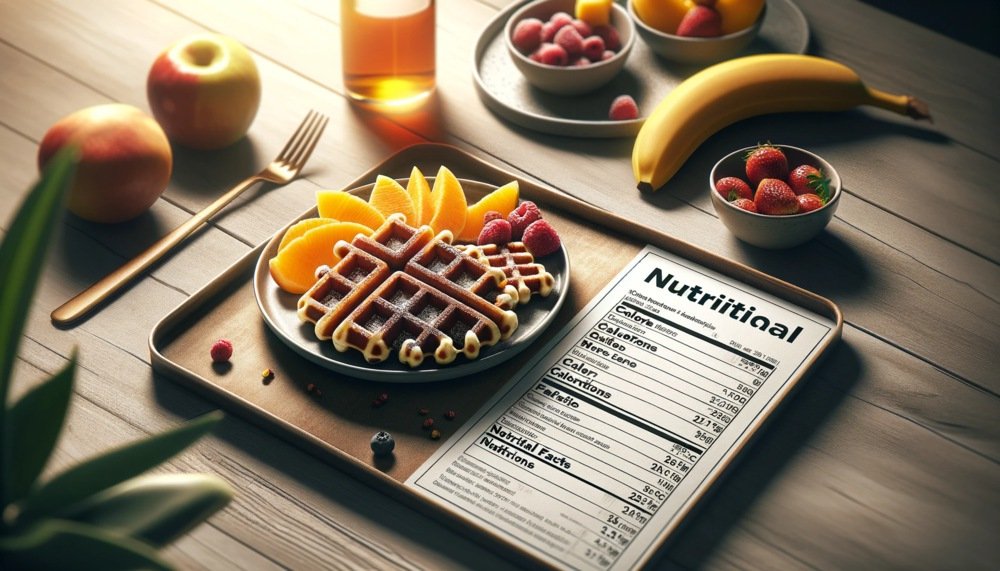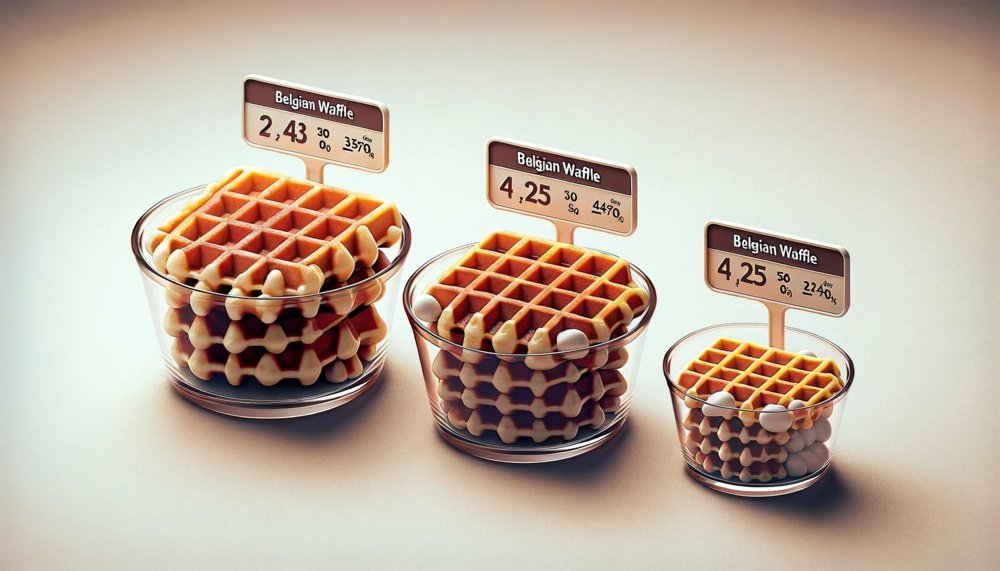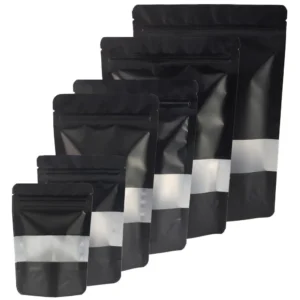- Introduction
- Caloric Content of Belgian Waffles
- Nutritional Breakdown of Belgian Waffle
- Belgian Waffles with Butter and Syrup
- Assessing the Healthiness of Belgian Waffles
- Carbohydrates in Belgian Waffles Detailed
- Origins and History of Belgian Waffles
- Comparison to Other Waffle Varieties
- Understanding Calorie Burn for Waffles
- Serving Sizes and Variations
- Conclusion
- FAQs
- How many calories are in Belgian waffles?
- Are there any low-calorie options for Belgian waffles?
- Can I make Belgian waffles healthier by substituting ingredients?
- Is it possible to enjoy Belgian waffles without feeling guilty about the calories?
- Are there any nutritional benefits to eating Belgian waffles?
- Frequently Linked Pages
Introduction
Did you know that a single serving of Belgian waffles can pack in as many as 500 calories? That’s more than a quarter of the recommended daily calorie intake for an average adult! While these fluffy breakfast delights are undeniably delicious, it’s important to be mindful of their caloric content.
Belgian waffles are renowned for their unique texture and mouthwatering taste. They are often enjoyed with a variety of toppings such as syrup, butter, or fresh fruits. However, indulging in these treats regularly without considering their nutritional breakdown can quickly add up the pounds.
We’ll explore how they fit into a balanced diet and provide tips on making healthier choices when enjoying this popular breakfast food. So, if you’re curious about the impact of Belgian waffles on your waistline, stay tuned!
Caloric Content of Belgian Waffles

A typical Belgian waffle contains around 300-400 calories
Belgian waffles, known for their fluffy texture and delightful taste, are a popular breakfast or brunch option for many. However, it’s essential to be aware of their caloric content if you’re watching your calorie intake. On average, a single Belgian waffle can range from 300 to 400 calories. This estimate may vary slightly depending on the size and specific ingredients used in the recipe.
The calorie count may vary depending on the size and ingredients used
The caloric content of a Belgian waffle can fluctuate based on various factors. Firstly, the size of the waffle plays a significant role in determining its calorie count. Larger-sized waffles will naturally contain more calories compared to smaller ones. The ingredients incorporated into the batter can impact its overall caloric value.
Traditional Belgian waffles typically consist of flour, eggs, milk, butter, sugar, and yeast or baking powder. While these ingredients contribute to the rich flavor and texture of the waffle, they also add to its caloric content. Some variations may include additional ingredients such as chocolate chips, fruits, or whipped cream toppings which can further increase the calorie count.
It’s important to be mindful of portion sizes when enjoying Belgian waffles
When indulging in Belgian waffles as part of your meal or snack choice, portion control is key. While they may be deliciously tempting to devour in large quantities, it’s crucial to practice moderation. Opting for a smaller-sized portion or sharing with others can help manage your overall calorie intake while still allowing you to enjoy this delectable treat guilt-free.
Pairing your Belgian waffle with healthier accompaniments can also make a difference in managing its caloric impact on your diet. Fresh fruits like berries or sliced bananas provide natural sweetness and added nutrients without significantly increasing the overall calorie count. Choosing lower-calorie toppings such as Greek yogurt or a drizzle of honey can be a healthier alternative to heavy syrups or whipped cream.
Nutritional Breakdown of Belgian Waffles
Belgian waffles are more than just a delicious treat; they also provide essential nutrients that our bodies need. Besides being mindful of the calories, it’s important to consider the overall nutritional value of these delectable delights.
Carbohydrates, Protein, and Fat
Belgian waffles are a significant source of carbohydrates, which are our body’s primary energy source. They give us the fuel we need to power through our day. These fluffy waffles also contain protein, which helps in building and repairing tissues in our body. While they do contribute to our daily protein intake, it’s worth noting that Belgian waffles are not an exceptionally high-protein food.
Belgian waffles do contain some amount. The fat adds flavor and richness to the waffle batter and contributes to its texture. However, it’s important to be mindful of portion sizes as excessive consumption of fat can lead to weight gain and other health issues.
Vitamins – A and B-Complex
In addition to carbohydrates, protein, and fat, Belgian waffles also offer some essential vitamins. One such vitamin is vitamin A, which plays a crucial role in maintaining healthy vision, supporting immune function, and promoting cell growth. Vitamin A is especially important for maintaining good eye health.
Belgian waffles also contain B-complex vitamins like thiamin (B1), riboflavin (B2), niacin (B3), pyridoxine (B6), folate (B9), and cobalamin (B12). These vitamins play various roles in our body including converting food into energy, supporting brain function, aiding in red blood cell formation, and helping with DNA synthesis.
Minerals – Not Particularly Rich
While Belgian waffles offer carbohydrates, protein, fats, vitamins A and B-complex; they are not particularly rich in minerals. They do contain trace amounts of minerals like calcium, iron, magnesium, and phosphorus. However, if you’re looking to increase your mineral intake significantly, there are other food options that would be more beneficial.
It’s important to note that the nutritional value of Belgian waffles can vary depending on the ingredients used and any additional toppings or syrups added. Opting for whole-grain flour instead of refined flour can increase the fiber content and provide more nutrients.
Belgian Waffles with Butter and Syrup
Adding butter and syrup to your Belgian waffle can significantly increase its calorie content. While the plain waffle itself is relatively low in calories, these additional toppings can quickly turn it into a more indulgent treat.
Butter, when melted and spread over the warm waffle, adds extra fat to the equation. Fat is dense in calories, containing nine calories per gram compared to four calories per gram of carbohydrates or protein. So, even a small pat of butter can add quite a few extra calories to your breakfast.
Similarly, when you pour maple syrup or any other sweet syrup over your waffle, you’re adding additional sugar to the overall nutritional profile. Sugar is another ingredient that contributes to the calorie count and can lead to an energy spike followed by a crash later on.
Now, don’t get me wrong – enjoying some butter and syrup on your Belgian waffle every now and then isn’t necessarily a problem. It’s all about moderation. If you’re mindful of portion sizes and choose healthier alternatives for these toppings, you can still enjoy a delicious breakfast without going overboard on the calorie intake.
For example, instead of slathering your entire waffle with butter, try using just a small amount or opting for a lower-fat spread like margarine or fruit preserves. Similarly,Consider using sugar-free options or drizzling just a little bit rather than drowning your waffle in sweetness.
By making these simple swaps and being mindful of how much butter and syrup you add to your Belgian waffles, you can still satisfy your cravings while keeping the calorie count in check.
Remember that consuming excessive amounts of added fats and sugars regularly may not be beneficial for overall health. These ingredients are often linked to weight gain and increased risk of chronic diseases such as obesity, heart disease, and type 2 diabetes.
Assessing the Healthiness of Belgian Waffles
Belgian waffles are undeniably delicious and can be a delightful indulgence. However, it’s important to recognize that they should be enjoyed in moderation rather than consumed on a daily basis due to their high-calorie content.
Opting for whole-grain or low-sugar varieties can make Belgian waffles slightly healthier choices. Whole-grain waffles provide more fiber, which aids in digestion and helps you feel fuller for longer. Choosing low-sugar options can help reduce the overall calorie and sugar intake.
Balance is key. While enjoying a Belgian waffle every now and then won’t completely derail your diet, it’s crucial to consider the overall composition of your meals throughout the day. Incorporating nutrient-dense foods like fruits, vegetables, lean proteins, and whole grains into your diet will help ensure you’re meeting your nutritional needs.
Remember that portion control plays a significant role in managing calorie intake. It’s easy to get carried away with toppings such as butter, syrup, or whipped cream when indulging in Belgian waffles. These additions can significantly increase the calorie content of your meal. Be mindful of how much you’re adding and consider healthier alternatives such as fresh fruit or Greek yogurt instead.
If you’re looking for ways to make your Belgian waffle experience even healthier, consider experimenting with different toppings and accompaniments. Fresh berries provide natural sweetness along with vitamins and antioxidants while adding minimal calories. You could also try using nut butter instead of traditional spreads like butter or Nutella for an added dose of protein and healthy fats.
While Belgian waffles may not be the healthiest breakfast choice on their own due to their high-calorie content, they can still be enjoyed as part of a balanced diet by making mindful choices about ingredients and portion sizes.
Carbohydrates in Belgian Waffles Detailed

Carbohydrates are the primary macronutrient found in Belgian waffles, and they play a crucial role in providing energy for our bodies. These carbs mainly come from the flour used to make the batter, which undergoes digestion and gets converted into sugars.
When we indulge in a delicious Belgian waffle, we’re not just enjoying its fluffy texture and delightful taste; we’re also fueling our bodies with carbohydrates. These carbs act as a source of energy, giving us the power to go about our day.
Belgian waffles are typically made using a combination of ingredients such as flour, eggs, milk, butter, sugar, and yeast. The flour serves as the main source of carbohydrates in this delectable treat. During digestion, the complex carbohydrates present in the flour break down into simpler sugars like glucose.
It’s important to note that different recipes may vary slightly in their composition. Some variations might include additional ingredients like chocolate chips or fruit toppings that can contribute to the overall carbohydrate content of the waffle.
For individuals who need to monitor their blood sugar levels or follow specific diets that require carbohydrate control, being aware of their carbohydrate intake becomes essential. While indulging in a Belgian waffle every now and then is perfectly fine for most people, those with diabetes or other dietary restrictions may need to be more cautious.
One way to manage carbohydrate intake is by considering portion sizes. Opting for smaller-sized Belgian waffles or sharing one with a friend can help moderate your carb consumption while still enjoying this tasty treat.
Another strategy is to pair your Belgian waffle with protein-rich foods such as Greek yogurt or scrambled eggs. Protein helps slow down the absorption of carbohydrates into your bloodstream and can prevent sharp spikes in blood sugar levels.
If you’re looking for lower-carb alternatives but still crave that classic Belgian waffle experience, there are recipes available that use alternative flours like almond flour or coconut flour. These options can provide a reduced carbohydrate content while still delivering the beloved taste and texture of a traditional Belgian waffle.
Origins and History of Belgian Waffles
Belgian waffles, a beloved international breakfast item, have a rich history that dates back centuries. These delectable treats originated in Belgium and gained popularity in the 18th century. Today, they are enjoyed in various forms and styles around the world.
The origins of Belgium’s famous delicacy date back centuries
Belgian waffles have a long-standing history that can be traced back to medieval times. The people of Belgium have been perfecting their waffle-making skills for generations, resulting in the creation of this iconic breakfast dish. It is believed that the recipe for Belgian waffles was first developed by monks who used to live in monasteries across Belgium.
Belgian waffles gained popularity in the 18th century
During the 18th century, Belgian waffles started gaining recognition outside of monastic communities. They became a popular street food item at fairs and festivals throughout Belgium. The unique texture and taste of these waffles quickly captivated people’s palates, leading to an increase in their popularity.
They have since become a beloved international breakfast item
Over time, Belgian waffles made their way beyond the borders of Belgium and captured the hearts (and stomachs) of people worldwide. Today, you can find variations of Belgian waffles being served in cafes, restaurants, and even food trucks across different countries. Whether it’s topped with fresh fruits, whipped cream, or drizzled with maple syrup or chocolate sauce, everyone has their own favorite way to enjoy these crispy yet fluffy delights.
Belgian waffles have become so popular that they even have their own dedicated day – March 25th is International Waffle Day! This shows just how much love there is for this breakfast treat all around the world.
Comparison to Other Waffle Varieties
Belgian waffles are a unique and delicious treat that sets them apart from other waffle varieties. One key difference lies in their light and fluffy texture, making them a favorite among waffle enthusiasts. These delectable delights are typically larger in size, boasting deeper pockets that are perfect for holding all your favorite toppings.
Unlike traditional American-style waffles, Belgian waffles have a lighter batter that results in a crispier exterior while maintaining a soft and airy interior. This contrast in textures creates an enjoyable eating experience that is truly satisfying.
The larger size of Belgian waffles allows for more surface area to be covered with toppings like fresh fruits, whipped cream, and syrup. The deep pockets also help to hold these toppings securely, preventing them from sliding off as you take each mouthwatering bite.
Understanding these differences is crucial. If you’re someone who enjoys a lighter and fluffier texture with a crispy exterior, then Belgian waffles are the way to go. Their ability to hold an abundance of toppings makes them perfect for those who like to indulge in extravagant breakfast creations or decadent desserts.
On the other hand, if you prefer a denser and chewier texture with less surface area for toppings, traditional American-style or even classic buttermilk waffles might be more up your alley. These types of waffles offer their own unique charm and can be equally delicious when paired with the right accompaniments.
Ultimately, the choice between Belgian waffles and other varieties boils down to personal preference. Some may prefer the lightness and versatility of Belgian waffles, while others may lean towards the heartiness of different styles. Whichever option you choose, one thing is certain – there’s no shortage of delicious ways to enjoy this beloved breakfast staple.
So next time you find yourself craving some scrumptious waffles, take a moment to consider the differences between Belgian waffles and other varieties. Whether you’re in the mood for a light and fluffy treat or a more substantial option, there’s a waffle out there that will satisfy your taste buds and leave you craving for more.
Understanding Calorie Burn for Waffles
Many of us wonder about the calories we are consuming. The number of calories burned while eating Belgian waffles depends on various factors such as metabolism and physical activity level. Engaging in regular exercise can help offset the calorie intake from indulging in this tasty treat. It’s important to maintain a balanced approach to both diet and exercise.

Metabolism and Calorie Burn
Metabolism plays a crucial role in determining how many calories our bodies burn throughout the day. Each person has a unique metabolic rate, which is influenced by factors like age, gender, genetics, and body composition. Some individuals naturally have a faster metabolism, meaning they burn more calories even at rest.
When we consume food, including Belgian waffles, our bodies use energy to digest and process it. This process is known as the thermic effect of food (TEF). While TEF varies depending on the type of food consumed, protein-rich foods tend to have a higher TEF compared to carbohydrates or fats.
Physical Activity Level
Physical activity is another significant factor that affects calorie burn. Engaging in activities that get your heart rate up and make you sweat can help increase your overall calorie expenditure. Whether it’s going for a jog, hitting the gym, or participating in sports, these activities contribute to burning calories.
While eating Belgian waffles may not directly result in burning calories like exercise does, incorporating physical activity into your routine can help create an overall calorie deficit if weight loss or maintenance is your goal.
Balancing Diet and Exercise
Maintaining a healthy lifestyle involves finding a balance between diet and exercise. Indulging in occasional treats like Belgian waffles can be part of a balanced approach as long as you are mindful of portion sizes and overall calorie intake.
If you’re concerned about the number of calories consumed from Belgian waffles, you can make some modifications to the recipe or toppings. Opting for whole-grain flour instead of refined flour adds more fiber and nutrients to your waffles. Topping them with fresh fruits, yogurt, or a drizzle of honey can provide additional nutritional value.
Remember, it’s not just about the calories consumed from Belgian waffles alone but rather the overall picture of your diet and physical activity level. Incorporating regular exercise into your routine helps burn calories and maintain a healthy weight.
Serving Sizes and Variations
Belgian waffles come in various serving sizes and can be customized with different toppings, adding a touch of excitement to your breakfast routine. Whether you prefer one large waffle or two smaller ones, the choice is yours.
Belgian waffles can be found as one large piece or divided into two smaller ones. The larger size is perfect for those who have a big appetite or want a hearty breakfast to start their day. On the other hand, the smaller portions are great if you prefer lighter meals or want to share with someone else.
Now let’s talk about the fun part – variations! One of the best things about Belgian waffles is that they can be customized to suit your taste preferences. You can experiment with different toppings and flavors to make each meal unique.
Adding fruits like strawberries, blueberries, or bananas on top of your waffle not only adds a burst of color but also provides essential vitamins and minerals. It’s like having a mini fruit salad on your plate!
If you have a sweet tooth, consider indulging in some whipped cream or chocolate sauce as toppings. These decadent additions take your Belgian waffle experience to another level of deliciousness. Just remember to enjoy them in moderation because too much sweetness might leave you feeling sluggish later on.
For those who prefer a healthier option, you can opt for Greek yogurt instead of whipped cream. It adds a creamy texture while providing protein and probiotics beneficial for gut health.
Another way to switch things up is by incorporating different flavors into the batter itself. You can add vanilla extract for a classic twist or experiment with cinnamon or nutmeg for an extra kick of flavor.
By trying out various serving sizes and exploring different toppings and flavors, you’ll never get bored with your morning waffle routine. It’s like having a blank canvas where you can unleash your creativity and customize each bite according to your mood.
Conclusion
Belgian waffles can be a delicious treat, but they should be enjoyed in moderation due to their high caloric content. As we explored in this article, Belgian waffles can vary in terms of nutritional value depending on the toppings and serving sizes. While they provide a significant amount of carbohydrates, they may not offer a well-rounded nutritional profile. It is important to consider your overall dietary goals and make informed choices when indulging in these delectable treats.
To maintain a balanced diet, you can opt for healthier alternatives such as whole grain waffles or experiment with different toppings like fresh fruits and yogurt. Remember, it’s all about finding the right balance that works for you. So go ahead and savor those Belgian waffles, but do so mindfully to ensure you’re supporting your overall health and wellness goals.
FAQs
How many calories are in Belgian waffles?
Belgian waffles can vary in calorie content depending on their size and ingredients. On average, a plain Belgian waffle without any toppings or syrup contains approximately 300-400 calories. However, when additional toppings like whipped cream, syrup, or fruit are added, the calorie count can increase significantly.
Are there any low-calorie options for Belgian waffles?
Yes, there are ways to enjoy lower-calorie Belgian waffles. You can opt for whole wheat or oatmeal-based batter instead of using refined flour. Using non-fat milk or almond milk instead of regular milk also reduces calorie content. Topping your waffle with fresh fruit and a drizzle of honey instead of sugary syrups can help keep the calorie count down.
Can I make Belgian waffles healthier by substituting ingredients?
Absolutely! You can make healthier Belgian waffles by making simple ingredient substitutions. For instance, you can use Greek yogurt instead of butter to reduce fat content. Replace some of the all-purpose flour with whole wheat flour for added fiber. Sweeten your batter with natural alternatives like mashed bananas or applesauce instead of refined sugar.
Is it possible to enjoy Belgian waffles without feeling guilty about the calories?
Yes! Enjoying Belgian waffles doesn’t have to be a guilt-inducing experience. Moderation is key; consider having a smaller portion size or sharing with a friend. Focus on savoring each bite mindfully rather than devouring them quickly. By choosing healthier toppings and incorporating nutritious ingredients into the batter, you can indulge in delicious Belgian waffles while still being mindful of your calorie intake.
Are there any nutritional benefits to eating Belgian waffles?
While traditional Belgian waffles may not be considered highly nutritious on their own, you can enhance their nutritional value through ingredient choices and toppings. Adding fruits like berries or sliced bananas provides essential vitamins and minerals. Opting for whole grain or gluten-free flours increases fiber content. Pairing your waffle with a source of protein like Greek yogurt or nuts adds satiety and balances the meal.
Frequently Linked Pages
1. Belgian waffles recipes – Easy Homemade Belgian Waffle Recipes
2. Belgian waffles near me – Belgian Waffles Near Me: Indulge In Irresistible Delights Nearby
3. Belgian waffles mix – Belgian Waffles Mix: Perfecting Breakfast Delights With Authentic Flavors
4. Belgian waffles ihop – Belgian Waffles IHOP: Indulge In Irresistible Breakfast Classics







